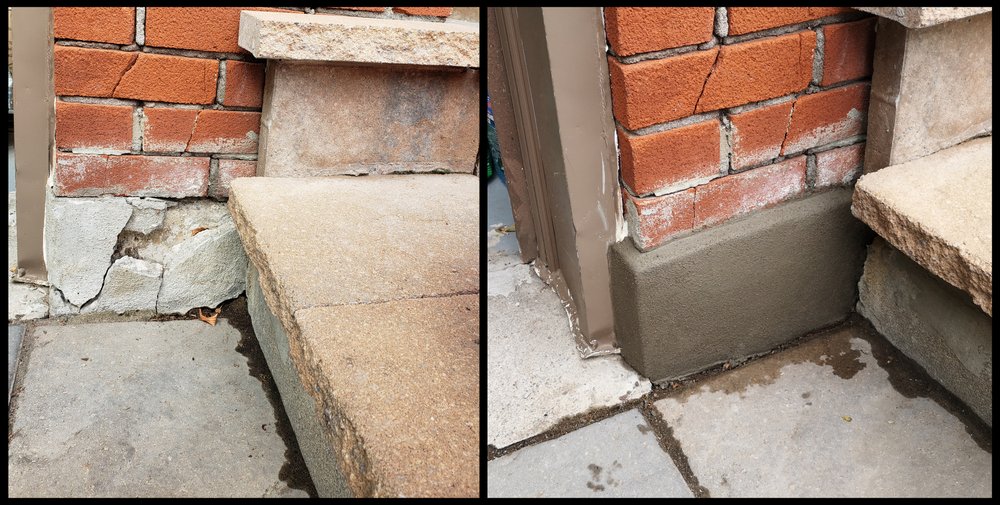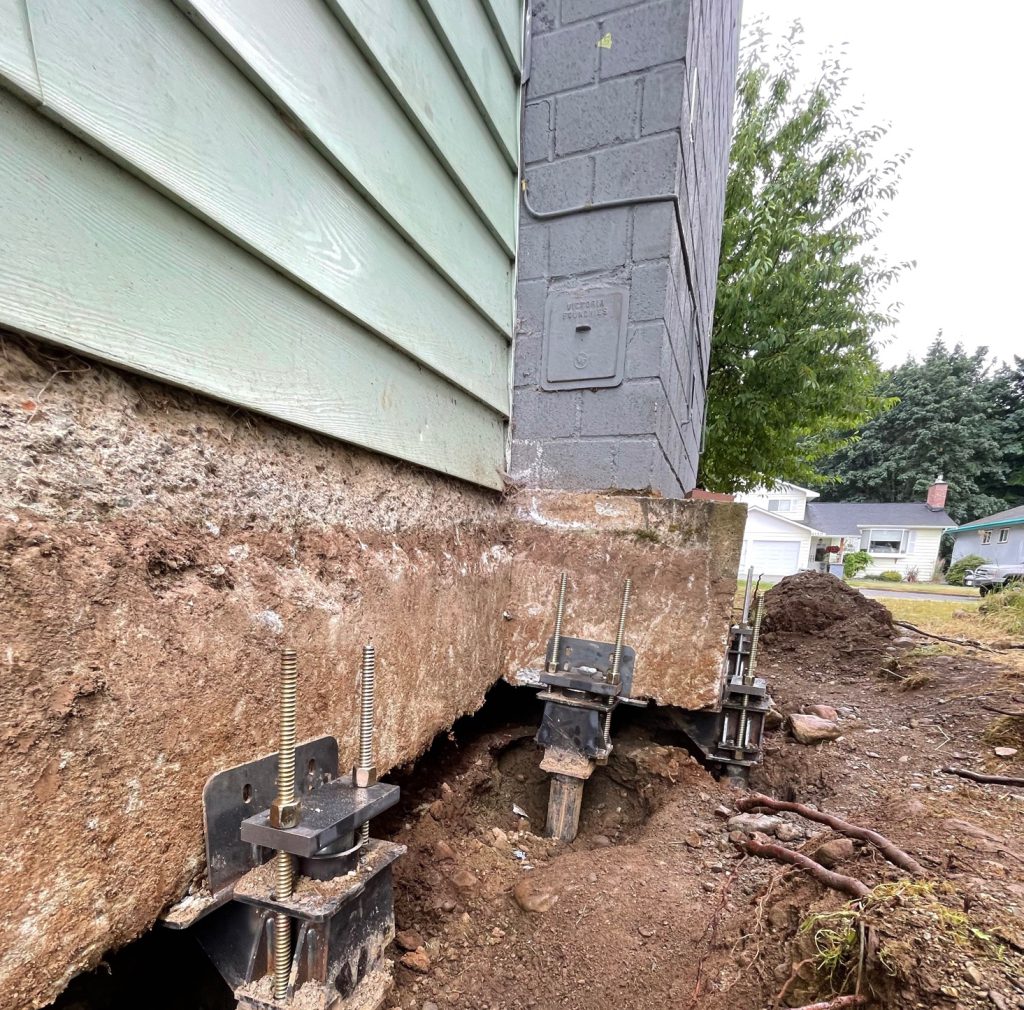The Ultimate Solutions for Foundation Repair Oklahoma City: Professional Insights
Wiki Article
Discovering Various Techniques of Structure Repair for Various Dirt Types
Foundation repair is a critical aspect of keeping architectural honesty, especially when thinking about the varied obstacles posed by various dirt types. The complexity of dirt habits under differing conditions demands a tailored method to repair, making certain optimum remedies such as helical piers for unpredictable dirts or chemical cements for cohesive layers.Understanding Dirt Types
Dirt types play an important duty in the stability and long life of structure structures, making it crucial for house owners and construction professionals to recognize their characteristics and actions. The interaction in between soil and structure can figure out the structural honesty of a building. There are numerous soil kinds, each with unique physical properties that affect just how foundations are designed and kept.Granular dirts, such as sand and crushed rock, provide excellent drainage and are usually considered secure. In contrast, cohesive dirts like clays and silts exhibit various actions.
Rocky dirts, understood for their strength and stability, deal excellent support for structures however may require specific tools for excavation. Conversely, fertile dirts, which are a balanced mixture of sand, silt, and clay, usually give beneficial problems for structure support as a result of their moderate water drainage homes.

Comprehending these soil types is crucial for picking ideal foundation fixing methods, ensuring the sturdiness and safety and security of frameworks in time.
Difficulties With Extensive Clay
Amongst the numerous dirt kinds, expansive clay offers one-of-a-kind challenges for structure stability as a result of its tendency to undertake considerable volume modifications with moisture variation. This kind of soil swells when damp and agreements when completely dry, which can exert considerable pressure on frameworks. These variations can cause foundation breaking, heaving, and negotiation concerns, posturing considerable dangers to the structural integrity of buildings.The challenges with expansive clay are intensified by its plasticity index, which determines the soil's capacity to alter form and volume. A high plasticity index suggests better capacity for movement, enhancing the possibility of damage to foundations. This is specifically bothersome in areas experiencing frequent or extreme climate adjustments, where cycles of wet and completely dry conditions are typical.
Moreover, the depth of expansive clay layers can differ, complicating the analysis and preparation of proper foundation repair methods. The unpredictable nature of its movement requires specialized engineering options to alleviate threats. Additionally, expansive clay can affect utility lines, walkways, and driveways, additionally making complex repair work efforts. These intricacies require a thorough geotechnical evaluation to ensure reliable structure fixing methods are applied, highlighting the value of resolving large clay challenges with competence and care.
Solutions for Sandy Soils
Sandy soils, defined by their large particle dimension and low cohesion, existing distinctive challenges for structure stability due to their tendency for changing and erosion. By securing the foundation to much deeper, more secure dirt layers, these systems can supply the needed support to neutralize the changing nature of sandy soils.Another advised method is the application of dirt stabilization methods. Chemical grouting, for instance, entails injecting a maintaining agent into the soil, which enhances cohesion and reduces leaks in the structure. This procedure aids to solidify the sandy substrate, consequently reducing the risk of erosion and motion.
Additionally, setting up appropriate water drainage systems is critical in sandy soil conditions. Ensuring adequate drainage can protect against water buildup around the structure, which commonly aggravates erosion and dirt variation. Methods such as French drains pipes or surface grading can be used to direct water far from the structure perimeter.
Resolving Resolving in Loamy Soils
Loamy dirts, understood for their balanced mix of clay, silt, and sand, offer a productive base for several structures but can sometimes cause structure settling as a result of their distinct composition. This balanced appearance provides exceptional drain and nutrient retention, making it perfect for agriculture and landscaping. This very same characteristic can end up being bothersome for structures, as changes in wetness content can cause the soil to broaden or contract, leading to working out.Attending to working out in fertile soils calls for a diverse technique. Exact soil screening is important to establish the details structure and moisture web content of the loam. Once information is gathered, implementing correct drainage services is important to keep regular wetness degrees, consequently decreasing the threat of soil tightening or development. French drains or surface grading are reliable methods to reroute water far from the foundation.

Cutting-edge Repair Service Strategies
In the world of structure repair work, cutting-edge strategies are consistently being established to attend to the complex tests positioned by numerous dirt conditions. As soil types differ significantly in their structural residential properties, conventional methods might not always are adequate. The development of new innovations in foundation repair service supplies more tailored remedies, making sure security and durability.One significant innovation is using helical piers, which are specifically reliable in unstable or extensive soils (foundation repair Oklahoma). These piers are screwed into the ground till they reach a steady layer of soil, supplying strong support for the foundation above. This method minimizes disruption and is versatile to different dirt kinds, making it a flexible solution
Another cutting-edge strategy is the application of polyurethane foam shot. This approach involves infusing high-density polyurethane foam below the structure to load gaps and stabilize the framework. It is a much less invasive option to standard support, offering quick setup with marginal disruption to the surrounding area.
Additionally, soil stablizing techniques, such as using chemical cements, have obtained traction. These substances enhance dirt toughness and minimize leaks in the structure, preventing future shifting. Jointly, these ingenious repair techniques give effective services for the diverse obstacles presented by differing dirt problems.
Conclusion

Foundation repair is an important element of preserving structural integrity, particularly when considering the varied obstacles positioned by various soil types (foundation repair oklahoma city ok). The intricacy of dirt actions under differing conditions demands a customized method to fix, ensuring optimal services such as helical piers for unsteady dirts or chemical cements for cohesive layers. By anchoring the structure to much deeper, a lot more steady soil layers, these systems can provide the necessary support to neutralize the moving nature of sandy dirts
Structure fixing needs mindful consideration of dirt types to make sure security and long life. Chemical grouts enhance soil toughness and lower leaks in the structure in natural soils.
Report this wiki page